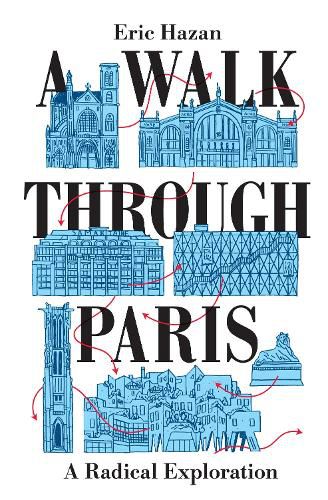Readings Newsletter
Become a Readings Member to make your shopping experience even easier.
Sign in or sign up for free!
You’re not far away from qualifying for FREE standard shipping within Australia
You’ve qualified for FREE standard shipping within Australia
The cart is loading…






Eric Hazan, author of the acclaimed The Invention of Paris, leads us by the hand in this walk from Ivry to Saint-Denis, roughly following the meridian that divides Paris into east and west, and passing such familiar landmarks as the Luxembourg Gardens, the Pompidou Centre, the Gare du Nord and Montmartre, as well as little-known alleyways and arcades.
Filled with historical anecdotes, geographical observations and literary references, Hazan’s walk guides us through an unknown Paris. He shows us how, through planning and modernisation, the city’s revolutionary past has been erased in order to enforce a reactionary future; but by walking and observation, he shows us how we can regain our knowledge of the radical past of the city of Robespierre, the Commune, Sartre and the May ‘68 uprising. And by drawing on his own life story, as surgeon, publisher and social critic, Hazan vividly illustrates a radical life lived in the city of revolution.
$9.00 standard shipping within Australia
FREE standard shipping within Australia for orders over $100.00
Express & International shipping calculated at checkout
Eric Hazan, author of the acclaimed The Invention of Paris, leads us by the hand in this walk from Ivry to Saint-Denis, roughly following the meridian that divides Paris into east and west, and passing such familiar landmarks as the Luxembourg Gardens, the Pompidou Centre, the Gare du Nord and Montmartre, as well as little-known alleyways and arcades.
Filled with historical anecdotes, geographical observations and literary references, Hazan’s walk guides us through an unknown Paris. He shows us how, through planning and modernisation, the city’s revolutionary past has been erased in order to enforce a reactionary future; but by walking and observation, he shows us how we can regain our knowledge of the radical past of the city of Robespierre, the Commune, Sartre and the May ‘68 uprising. And by drawing on his own life story, as surgeon, publisher and social critic, Hazan vividly illustrates a radical life lived in the city of revolution.